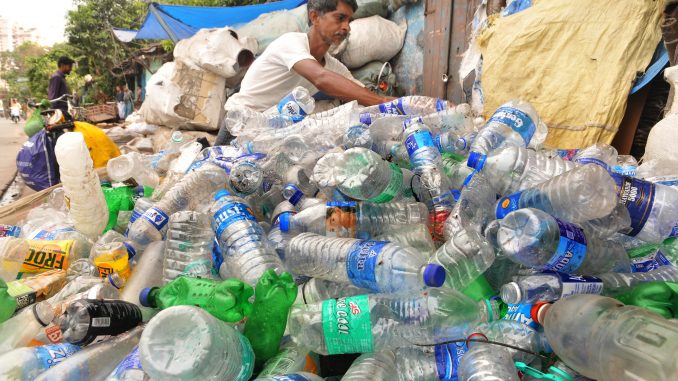
By Suradha Iyer
India set a record target this World Environment Day, as reported by the United Nations, where Prime Minister Narendra Modi vowed to stop the use of all single-use plastics in the country by 2022. It was one of the most ambitious claims among countries with similar goals. With this goal in mind, regular straws and packages have been replaced with a new plastic called polylactic acid plastics (PLA). However, the question that now arises is will this straw save India from environmental destruction?
In light of India’s 2000 km coastlines, marine litter is a large threat and plastic litter causes grave harm to marine life which threatens the food cycle and creates a problem of excessive microplastics in the food we ingest. Microplastics are byproducts of slow degradation of traditional consumer plastics like polyethene (PE) and polypropylene (PP) which enter water resources and food sources and make their way insidiously into the human body. The longer plastics take to decompose, which in the case of PP and PE can be up to 1000 years, the more microplastics degrade to enter the food chain. India, thus, also announced a national marine litter action campaign and a system to measure plastics entering the oceans.
State-wide Maharashtra ban
Earlier this year in June Mumbai implemented a complete ban on single-use plastics, from plastic bags to bottles and cutlery, as part of a statewide ban in Maharashtra. The ban allows exemptions for retail packaging, trash can liners and takeaway packaging, and further concessions were made to the ban on Saturday, reportedly in response to pressure from businesses. There has been excessive mobilisation against plastics in Mumbai after inspiring community efforts to save its beaches. The law fines manufacturers of traditional plastics, vendors, as well as the end consumers that do not comply with environmental standards- thrusting responsibility on the end users, which will help drive behavioural change in the egregious abuse of plastic and plastic products. Many restaurants and vendors have switched to using PLA in straws and food packaging and it has actually been very effective, if used with caution and disposed of efficiently.
What is PLA?
PLA is a robust, transparent plastic physically very similar to traditional plastics. It can be used in food packaging and waste disposal, creating the same amount of landfill waste. This generated waste can be easily combusted with efficient collection techniques and users can not tell the difference between PLA and PE/PP. Ideally, manufacturing could take place on the same machines and factories as PE/PP, thus restoring jobs to the thousands displaced by the complete plastic ban in Maharashtra.
Since PLA is produced from biomass (lactic acid sources) and natural sources unlike traditional plastic (produced from byproducts of the petrochemical processing industry), it is organic and renewable. It degrades much faster (up to 24 months in the ocean) than traditional plastics, leading to the negligible generation of microplastics.
Environmental impact
If PLA is recycled chemically, it’s monomer (the initial phase of PLA) can be recovered without any loss of properties and be used to regrow it to PLA. Although this does not help save any manufacturing costs, as recycling itself is very expensive. Additionally, raw materials used to make PLA are also expensive, making it an overall expensive alternative. However, with time and sufficient proficiency in the technology, manufacturers could drive prices down and increase the usage of PLA.
Another problem lies in the irresponsible disposal of waste, as PLA will not meet its full potential in being an environmental unicorn if it is not processed industrially to reduce its impact on the environment. Aside from the threat of microplastics, there is a significant harm of any plastic dumped into oceans and landfills- disruption of an ecosystem and choked animals and drains, creating a health hazard for collectors and residents of cities.
More responsibility to the public
A major problem with introducing alternative plastics into circulation is that the country’s recycling sector is informal and unregulated, operating without government oversight. If the culture of plastic use is sustained or expanding, none of the alternatives can solve the basic problem of waste. Imposing restrictions on citizens might be the need of the hour. South Africa imposed stringent measures for Cape Town residents this year and warded off “Day Zero”- the day without any available water for residents in Cape Town.
Consumer behaviours are unlikely to change without strict impositions and to cut these down. In fact, even a marginal increase in prices in the form of a plastic tax might just not do- maybe a complete ban without a PLA alternative would do the trick.
Source: Qrius

Leave a Reply